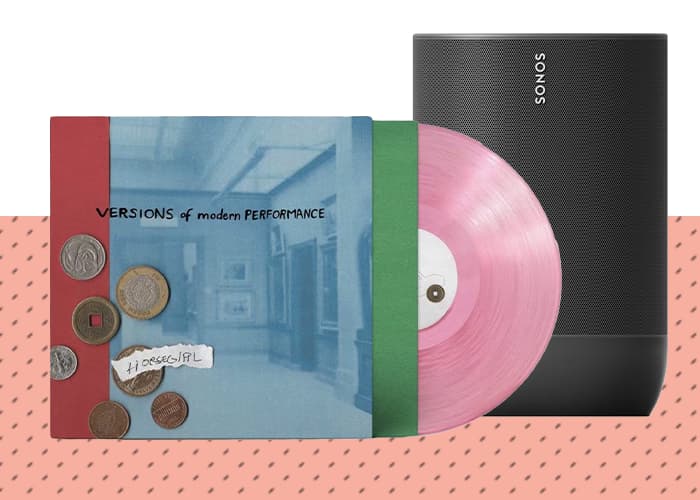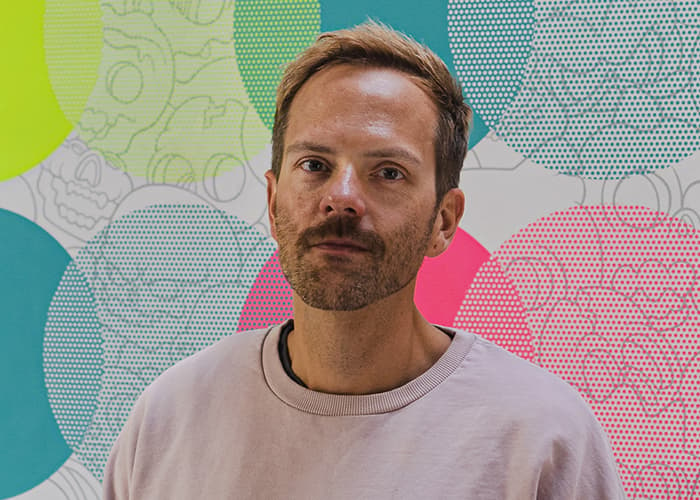Since 2007, Copenhagen has played host to the coolest and best skate event in the world, the CPH Open. This year, StockX sent four of its skaters, Robert Neal, Briana King, Zion Wright, and Yuri Facchini to Copenhagen to take part in all the fun. Throughout the Open, they’ll be providing some killer content, and of course, skating.
And to kick things off, we offer a deep dive into the CPH Open’s history with the help of the event’s founders.
All photos by Arto Saari.

In the Beginning
Like so many aspects of skate culture, the seeds of the CPH Open were planted in childhood. The Open’s three founders, William Frederiksen, Simon Wehye, and Cal Aabjoern, met through skateboarding as kids.
As Cal recalls, “I’m from a small island in the southern part of Denmark. William was one of the guys that I first saw skateboarding and I thought that was pretty rad and he got me into it.” But it wouldn’t be till years later in Copenhagen when Cal and William would reconnect. “After a lot of years in Copenhagen, we started to hang out,” Cal says. He would go on to work at the CPH Skatepark, get involved with CPH Open’s predecessor event, the Copenhagen Pro, and is now a partner in CPH Open’s parent company.

No surprise, William’s early years are similar to Cal: revolving around skating and Copenhagen. Originally from England, William grew up on the same island as Cal and eventually made his way to Copenhagen. Once in Copenhagen, William and Simon would meet and connect through skating.

Detailing the genesis of their friendship, William says, “Simon and I would always meet up at the contests and stuff. One of the big contests at the time was the Münster Monster Mastership in Germany.” Both were able to see American skateboarders Ray Barbee and Matt Hensley at the Mastership and experience live contest skateboarding. “I think that contest stuck to a lot of the Danish skaters,” William says.

Simon is a lifer. He started skating in the late 1980s in northern Denmark. He moved to Copenhagen and came up with Danish skate legends, including Rune Glifberg and Nicky Guerro. Skating led Simon to film: “I started filming skateboarding, and that turned into a job for a Danish skate brand where I worked as a film runner, team manager, and moved to Barcelona and did that whole skater life.” After the team and his position ended, Simon moved back to Copenhagen and reconnected with William and Cal at the CPH Skatepark. Simon says the three would talk back-and-forth about creating “some sort of contest like we had before, and also why there were no Americans [pro skaters] coming to Europe anymore.” A plan begins to take shape.
From the CPH Open’s founders’ origin stories, it seems inevitable that they would create a skate event in Copenhagen. Of course, the three needed some time to figure it all out until the CPH Open officially began in 2007.

Putting it Together
Inspiration can come from unlikely places, and the CPH Open is no different. Who would have guessed that the world’s best skate event would find its vibe in Tampa, Florida, at the annual Tamp Pro?
Around the turn of the century, William and Simon found themselves involved with the Scandanavian Open – Willam was helping with the course design, and Simon was filming for it. So when William began managing the CPH Skatepark in 2003, he and Simon revisited their Scandanaivan Open experience and decided, “We need to put the CPH Skatepark on the map.” But – and this remains core to the CPH Open ethos – they didn’t want to create an overblown event like the X Games or the Münster Monster Mastership. Enter the Tampa Pro.

William and Simon flew out to Tampa, linked with Skatepark of Tampa owner Brian Schaefer, and the Copenhagen Pro was born. Tampa proved that a world-class skatepark with a great vibe would entice skaters, no matter the location.

The Copenhagen Pro put the CPH Skatepark on the map. After several years of the Pro event, the trio wanted something more inclusive of the entire skate community and that would feature the city of Copenhagen as a leading partner, too. William explains the change: “We started shifting our focus from it being a skateboard competition in a skatepark where the pros were the main character to it being more of a cultural adventure where the pros have some of the main roles, but Copenhagen is the main character because Copenhagen is what people come back to see.”
To get it right, they took a year off – a sabbatical, as Simon puts it – and came back with an open, inclusive event designed to accommodate professionals and amateurs alike and push skateboarding out onto the Copenhagen streets. They’ve done such an amazing job creating the world’s best skate event that the culture mayor of Copenhagen, Franciska Rosenkilde, told Thrasher “[Copenhagen] need[s] the culture; they need the underground; they need the space to figure themselves out. And skateboarding is a way to do that.”

What Makes Copenhagen So Open?
There are a lot of unique factors that make Copenhagen the perfect destination for the ultimate skate pilgrimage. But the main elements are quirks of history, infrastructure, and a belief in the social contract.
City planning has helped shape Copenhagen into a skate-friendly city. The city is centralized with bike lanes – including a “superhighway” for bikes – allowing anyone to ride from one end of the city and back in 30 minutes or less. And for the last 20 years, the city has made a concerted effort to utilize public space to foster Copenhagen’s culture. “They really want to utilize the city and create these very active city plazas and spaces,” William explains.
 Copenhagen’s bike culture is one of the big draws for Robert Neal. “You go rent a bike for your whole stay,” he says, “And you don’t have to use an Uber or a car or anything. You just ride a bike everywhere you go. I feel like it’s very important to the skate culture because it just brings everybody together, and it’s a fun time.”
Copenhagen’s bike culture is one of the big draws for Robert Neal. “You go rent a bike for your whole stay,” he says, “And you don’t have to use an Uber or a car or anything. You just ride a bike everywhere you go. I feel like it’s very important to the skate culture because it just brings everybody together, and it’s a fun time.”

In addition to the city’s openness and centralized plan, Copenhagen also retains some of the best architecture in Europe. This is where the quirk of history comes in. Denmark is a small country situated on Germany’s northern border. When Hitler invaded much of Europe during World War II, Denmark surrendered, escaping the widespread bombing that destroyed so many European cities. As a result, original buildings and architecture still exist. “In the middle of the city, there’s this amazing mix of magnificent architecture that has history,” William says, “and then you have the whole Danish architecture legacy, furniture designers, and architects that make for a beautiful city.”
Describing the blend of factors that make Copenhagen unique, Zion Wright says, “You’re literally just going there, cruising, hanging out, riding bikes around the city, skating all of these different spots around the city, and the city has all this sick architecture.”

Finally, it all comes together in the Danish social contract buttressed by their 50% income tax. “We’re all fucking paying half of what we make to make sure that there is room for everybody,” says Simon, “We understand the idea financial support helps make good architecture that makes a good everyday life and a good everyday life makes people thrive and be happy and be happy to use the outdoor space. To be proud of their city.”
That the CPH Open exists at all is a direct result of the combination of history, infrastructure, and the social contract.

A Party Like No Other
The CPH Open has developed into an annual party where there’s an entire city to skate, to party, reconnect with old friends, and make new friends, all united in a passion for skate culture. Again, it’s all about the culture of Denmark. As William describes it, it boils down to what they like to call “hostmanship.” “It’s something we talk a lot about behind the scenes. It’s the way that you invite somebody to your home; what kind of host are you?”
For Zion Wright, 2021 will be his third trip to Copenhagen. He first heard about it five or six years ago and saw some footage, but being in Copenhagen is everything. “It’s definitely a one-of-a-kind type event. It’s just good times with the homies.”

Most importantly, it all works because the visitors and the city are united in wanting to have a great time together. This sometimes causes a few hiccups – like the year everyone partied a little too hard and forgot to hand out the event medals – but it makes for great stories afterward.
And the motto is simple: “Trust your homie. Give him one of your free beers.”

The Ultimate Pilgrimage
A few years ago, the party got a little too big, and the Open lost some of its intimate, authentic feel. William, Simon, and Cal huddled up and decided that the Open would no longer be advertised or marketed on the internet – even the dates of the yearly event are kept off of all digital platforms. The internet silence serves two purposes: crowd control and earning the event.
“Because it’s a secret, you have to make an effort to be there,” Cal says. He continues, “You don’t even know the program, but you maybe heard the date. You don’t know what; you don’t know where; you know you’re going.”

And it’s that effort, that desire to seek out the promise of the CPH Open that keeps it authentic and makes it a destination year after year. Briana King sees the Open as being all about community. She says, “It’s important to just be around who’s around you and find your family. You just build a better and bigger community and bigger family.”
William laughs, “There was a group from Chile that came, but none of them skated. They were just like, ‘We heard it’s a great party.’ Welcome to Copenhagen, friends.”

Stay tuned for all of StockX’s coverage of the 2021 CPH Open.























